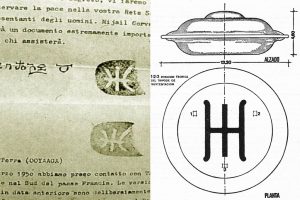
Belfast (Northern Ireland) – A new study by Northern Irish astrobiologists delivers a sensation: While there is far too little water in the cloud-dense atmosphere of Venus to allow even bacterial life – as we know it from Earth – the dense atmosphere of the gas giant offers Jupiter, on the other hand, not only has enough water, but also other positive conditions for life there.
Previously, measurement data had suggested the presence of the potential biomarker phosphine in the temperate and therefore potentially life-friendly layers of the Venusian atmosphere – a discovery or interpretation of the data that has since been controversial among scientists and is controversial.
As the team around the astrobiologist Dr. John E. Hallsworth and Dr. Philip Ball from the Irish Queen’s University recently reported in the journal “Nature Astronomy” (DOI: 10.1038 / s41550-021-01391-3) that they measured the amount of water in the Venusian atmosphere based on the concentration of water molecules there, the so-called water Activity, measured.
The result: The amount of water in the highly sulfurous clouds of Venus is a hundred times less than the minimum amount of water that at least every known earthly life needs in order to exist.
While the study minimizes the likelihood of microbial life on Venus or in its atmosphere, the study draws a completely opposite scenario for the atmosphere of the gas giant Jupiter. Not only is there sufficient “water activity” here, but also mild temperatures to enable microbial life – provided that other ingredients such as the necessary nutrients are also available.
“The search for extraterrestrial life (in the solar system) has so far been a little too simplified and focused on water as such,” explains Ball. Against the background of earthly life, we should also begin to regard earthly life as a benchmark and to ask whether an environment provides sufficient water for these biological processes. “
The water activities now determined on Venus and Jupiter are not based on models, but on specific measurements and observations of the existing pressure conditions, temperature and water concentrations. As comparison values, the researchers have also made their calculations for Earth and Mars and also show that similar things are also possible for planets outside the solar system (exoplanets).






